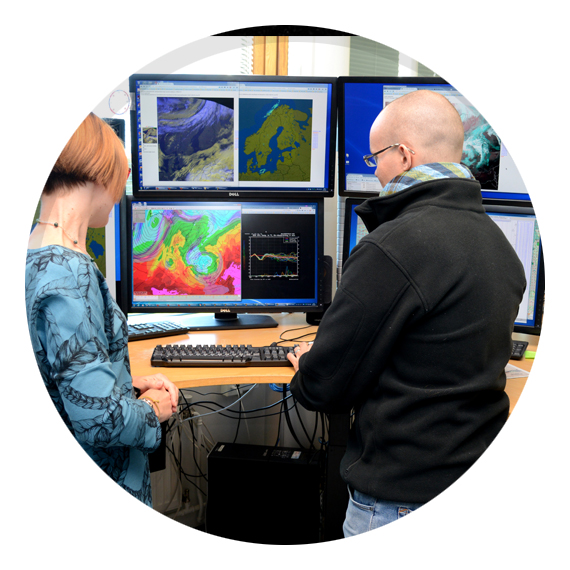Strategic infrastructures produce knowledge and cooperation

Research infrastructures refer to, e.g. the instruments, equipment, data networks, databases and services that enable research realised at different phases. The objective of well-functioning infrastructures is not only to improve the quality and renewal of Finnish research, but to also enhance Finland's competitiveness.
Weather knows no boundaries
The strategic infrastructures include an observation network which covers the whole of Finland and its development, maintenance, service and quality control. The observation network consists of different observation instruments and stations, including a radar network which is developed in international cooperation. A production system and high-performance computing are also essential parts of the infrastructure, similarly as the international satellite programmes that support the research and service provision.
"Weather observations have a major and extremely diverse significance in meteorology. They are the whole basis for weather forecasting, as weather for the near future cannot be forecast without knowledge of current state of the atmosphere. Real-time weather observations are also used as they are. For example, a meteorologist on duty and many professional users form a situational picture on the current weather conditions largely based on weather observations", notes Juhana Hyrkkänen, Head of the FMI's Observation Services Unit.
Weather phenomena and climate change do not know national borders and well-functioning international cooperation is thus an absolutely critical factor for the success of weather services and research. In order to enable weather models and end users to obtain the necessary observation data from the atmosphere, commonly agreed international practices are required for the information contents, formats and telecommunications. "The rate at which the changes of the technological revolution have occurred has been very fast. Recent trends worth mentioning include the Internet of Things, big data and citizens' observations. They open up brand new opportunities which are only limited by people's imagination", Hyrkkänen says.
International research infrastructures are significant for Finnish research
Research is another major consumer of weather and condition observations. Climate monitoring and research is the most significant application, but there are several areas where the data are applied, including the monitoring of air quality and greenhouse gases as well as marine research, for instance. Long observation time series and their reliability are particularly important for research, which sets requirements, e.g. for the representativeness of observation stations and quality verification of observation data.
The Finnish Meteorological Institute is also actively involved in a number of research infrastructures, including the Global Atmospheric Watch stations, ICOS, and ACTRIS. ICOS and ACTRIS form an entity that allows examining the share of the atmosphere in climate change. ICOS studies greenhouse gases and ACTRIS is concerned with fine particles, clouds and trace gases. Both of their headquarters are located in Helsinki.
"The climate system is complex and includes a lot of combined effects. Indeed, this is why there is a need for both extensive and high-quality research and research environments to allow us to properly understand the meanings between all these different factors", says FMI Research Manager Sanna Sorvari. The results of the studies led from Helsinki will particularly influence decision-making in international conferences on the climate. This is highly significant for Finnish research, as the activities create an international framework in Finland, thus also attracting international researchers from all over the world.
